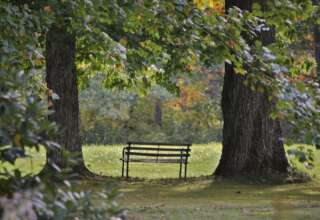
I wonder about the potential permanence of polarization among the populations in Estonia and other Eastern European countries (as well as other countries in the world) because of the way in which this polarization is often exhibited. During the time when Berne Weiss and I were in Eastern Europe, many of the citizens of these countries were not terribly charitable. They not only celebrated national days—they took great delight in waving the flag and decrying the failure of the previous regime in the faces of their Communist neighbors. Citizens of both Estonia and Hungary found that their differences of opinion and discrepancies in values were often large, once they are expressed. Sadly, like many citizens living in so-called “mature” democracies, they had not yet learned how to live with diversity. Are conditions any better today? Do we still need an external enemy to find room for acceptance of those living with quite different perspectives in our own communities?
The answers to these fundamental questions about the future of social democracies may not be what most of us want to hear. Social dislocation in Hungary and Estonia, as in most societies, has often been displayed in the rending of the social fabric and lack of respect for the rights of other people. The stage was set for a sense of alienation during the Soviet era, with the building of large, impersonal housing projects and dehumanizing factories—that were intended primarily for those who were defeated (their country was invaded or they were members of a minority group). The architectural style that in Eastern Europe was known bitterly as socialist realism looks identical to the style that developed in the United States during the 1930s and later (notably exhibited in the housing projects of the Bronx).
In the United States this model of urban development is called functional—but it often leads to the same kind of alienation and anomie found in the Soviet Union (as noted by the American environmental psychologist, Robert Sommer). Architecture worldwide was bitten by the fascist bug, which became most virulent after World War II—when fascism presumably had been defeated. The architecture remains like the scars of pox after a plague. At the time Berne Weiss and I wrote our book there was only elevated hope and accompanying disappointment, for these alienating living conditions were not changing rapidly—and still haven’t changed (in either the countries of the former Soviet Union or in the Unites States). What was once the utopian (and fascist leaning) vision of the 1930s (e.g. see Life magazine covers of the 1930s) had become something of a nightmare.
Berne Weiss and I found during our stay in both Estonia and Hungary that some people who longed for the old ways of living in Eastern Europe hoped to begin moving out of high-density urban complexes and back to the country, or at least to the suburbs. The rural or suburban state was certainly much more appealing to many Estonians than was urban life. Their traditional life in the country (agriculture) or on the coast (fishing) often seemed a more “natural state” to Estonians. Freedom comes not just through shifts in the rules and regulations in a society, but also ultimately through the changes in people’s daily living conditions: whether or not the circumstances of their lives are harmonious with their inner voices.









